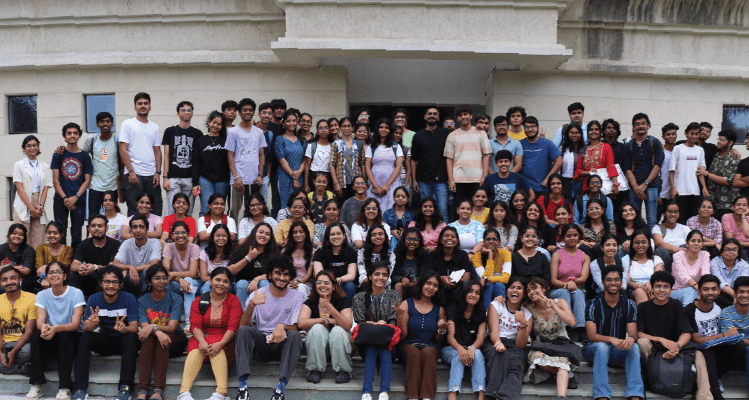An individual's portfolio represents and speaks volumes about them. It shows what kind of a person they are, reflects the designer in them, and how they let the projects do the talking. So, what do they do that makes their portfolio stand out among thousands of other fellow design aspirants?
To make the final year students understand this query, Avantika University had a valuable speaker from Forbes Marshall, Mr. Amod Gijare. He is the Team Lead Industrial Design interested in detailing and precision backed by strong Technical understanding.
He presented a brief on how Forbes Marshall functions and how the small element in a product matters and affects the entire product. After the brief, the discussion on the portfolio session was commenced. Discussion on the session topic was weighed upon by the speaker.
When a portfolio is being made, one should have a particular way of communicating their work with the person who is reviewing it. It should not look like a competition but it should communicate the kind of designer one is. It comes off as an attitude changer when reviewing the portfolio.
Treating the portfolio like an offer or a service one provides to someone gives it a better look like a bouquet to someone. When looked at from that perspective, a lot of things change and clarity is received by another individual. Mr. Amod decided to provide a framework on how one can design their portfolio.
This framework consists of Design Methodology, Skills, Tools, and Variety. Essentially every designer will have certain skills to showcase. The speaker suggested mapping it out and analyzing what kind of company one wants to join, and what fits their requirements and needs too.
The next point being tools, how much practice one has been through to use multiple software, and their skillset. What efficiency and proficiency one proudly holds and can use in designing products or services? When it comes to variety, what kind of design thinking one has to offer in a way they are very specific or accepting a wide range of ideas? Which domain they would like to specifically work on?
Is the individual proficient enough to work on a certain task? One should have everything mapped out which will have a proper understanding and they will know where to stand. The individual will decide to send the portfolio out to a suitable firm.
There are a set of skills that are introduced in any design education. As design aspirants, the students try to showcase everything like an exhibition. Especially the case with postgraduates who have the chance to display which skill is their forte. This also shows the variety of ideas they have to offer.
We are advised by our surroundings to have a wide range of ideas to design and be open to different areas. So how does one portray oneself when they go out in the industry as a fresher? Many of the skills that are required at an industrial level, the individual needs to step out and pick up once they are on-job. Highlighting a particular skill will consist of how one goes about the process of the skill they claim to possess.
For example: If an individual has a particular skill (let’s take a researcher) that makes them a good researcher, the industry would like to know what is the process or methodology they keep in mind and follow to research any domain they can and how does that go about solving the problem. It shows that they are open to work and explore in that domain. Even if it is researching, the individual can go about slicing the process, understanding the process, and how long it takes the individual to acquire that skill set.
The session ended on a positive note for the students to enhance their portfolio as well as Resume. The moderator thanked him for providing very informative and valuable material to build a good portfolio.
Niharika Gupta
